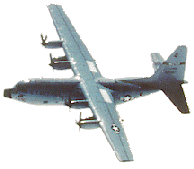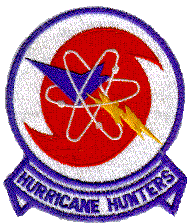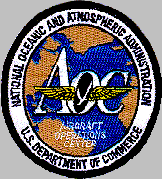For the latest forecasts and critical weather information, visit www.weather.gov/.
|
Subject: H2) Who are the "Hurricane Hunters" and what are they looking for? Contributed by Neal Dorst (HRD) In the Atlantic basin (Atlantic Ocean, Gulf of Mexico, and Caribbean Sea) and in the eastern and central Pacific, as required, hurricane reconnaissance is carried out by two government agencies The U.S. Navy stopped flying hurricanes in 1974.
 USAF USAF


The 53rd WRS is based at Keesler AFB in Mississippi and maintains a fleet of ten WC-130 planes. These cargo airframes have been modified to carry weather instruments to measure wind, pressure, temperature and dew point as well as drop instrumented sondes and make other observations.
 NOAA NOAA


AOC is presently based at Linder Airport in Lakeland, Florida and among its fleet of planes has two P-3 Orions, originally made as Navy sub hunters, but modified to include three radars as well as a suite of meteorological instruments and dropsonde capability. Starting in 1996 AOC added to its fleet a Gulfstream IV jet that is able to make observations from much higher altitudes (up to 45,000 feet). It is used primarily to drop sondes around the hurricane's environment to measure synoptic-scale parameters in the usually data-free oceanic areas.
The USAF planes are the workhorses of the hurricane hunting effort. They are often deployed to a forward base, such as Antigua, and carry out most of the reconnaissance of developing waves and depressions. Their mission in these situations is to look for signs of a closed circulation and any strengthening or organizing that the storm might be showing. This information is relayed by satellite to the hurricane specialists who evaluate this information along with data from other platforms. The NOAA planes are more highly instrumented and are primarily used for scientific research on storms. Also they may be called upon for reconnaissance of mature hurricanes threatening landfall, especially on U.S. territory. The planes carry between six to fifteen people, both the flight crew and the weather crew. Flight crews consist of an aircraft commander, co-pilot, flight engineer, navigator, and electrical technicians. The weather crew might consist of a flight meteorologist, lead project scientist, cloud physicist, radar specialist, and dropsonde operators. The primary purpose of reconnaissance is to track the center of circulation, these are the co-ordinates that the National Hurricane Center issues, and to measure the maximum winds. But the crews are also evaluating the storm's size, structure, and development and this information is also relayed to hurricane specialists via satellite link. Most of this data, which is critical in determining the hurricane's threat, cannot be obtained from satellite. The purposes of research are more varied. Onboard scientists direct the aircraft to those parts of the storm of interest, which might not be near the eye of the hurricane. Experiments might be planned to examine the outer rainbands or the hurricane's interaction with the environment. Never-the-less, information from these flights are also shared via satellite with land-based forecasters to keep them current on the storm's status. The NOAA G-IV jet usually does NOT penetrate the hurricane eye, but is assigned to fly synoptic scale patterns AROUND the storm, deploying dropsondes along the way, in order to profile the environmental flow that is moving the hurricane. In certain circumstances, a USAF WC-130 will also be assigned to fly a similar pattern in coordination with the G-IV to increase the coverage of this synoptic flow mission. Last revised: April 22, 2010
|
TC FAQ
Links of Interest
AOML Tools & Resources
Employee Tools
|
